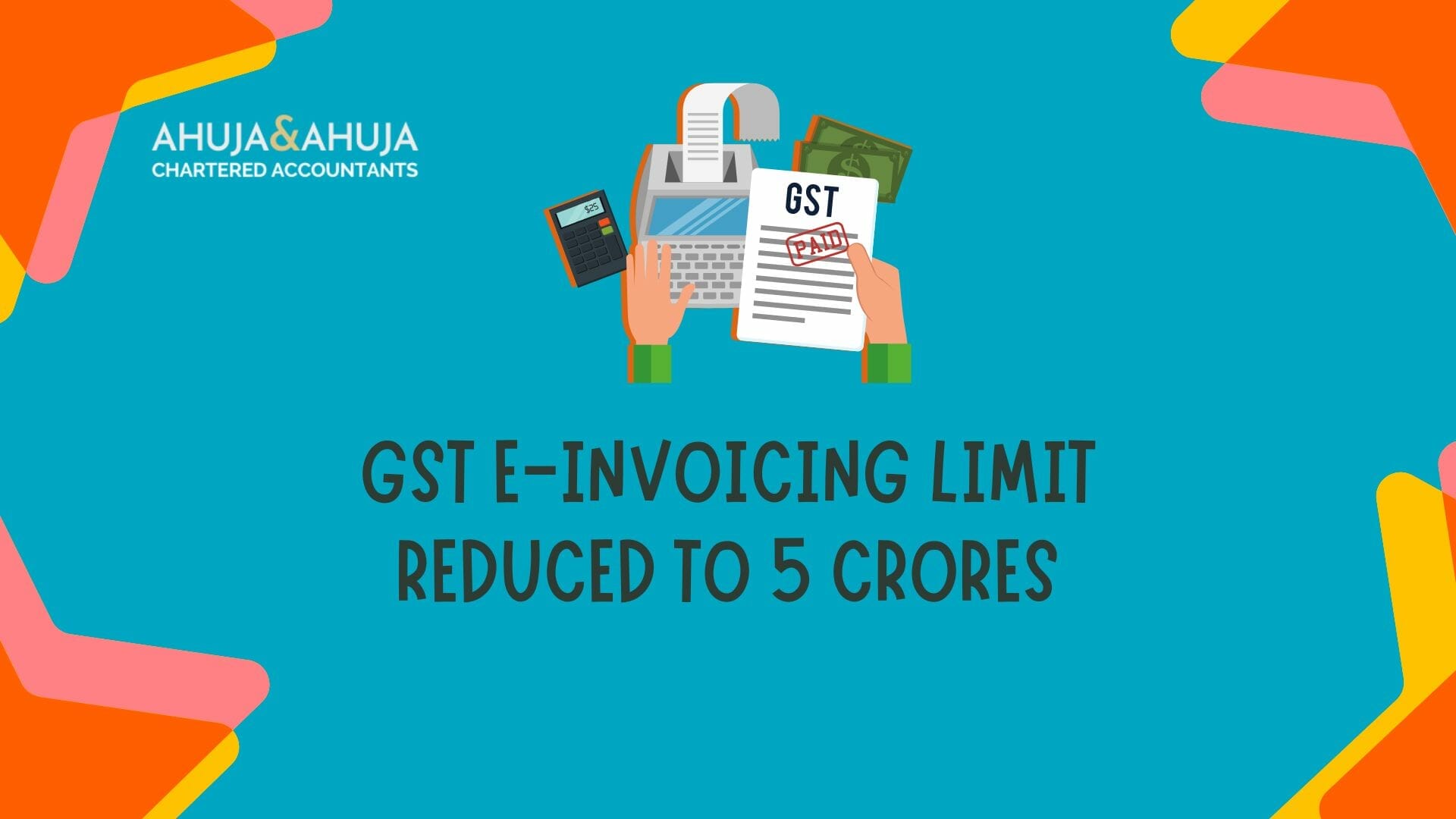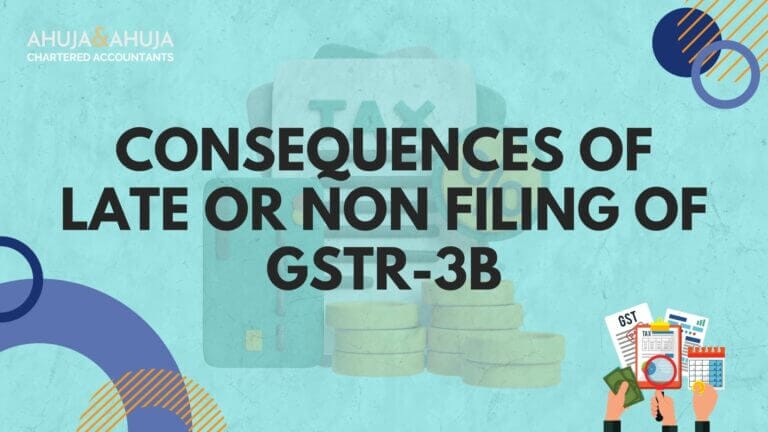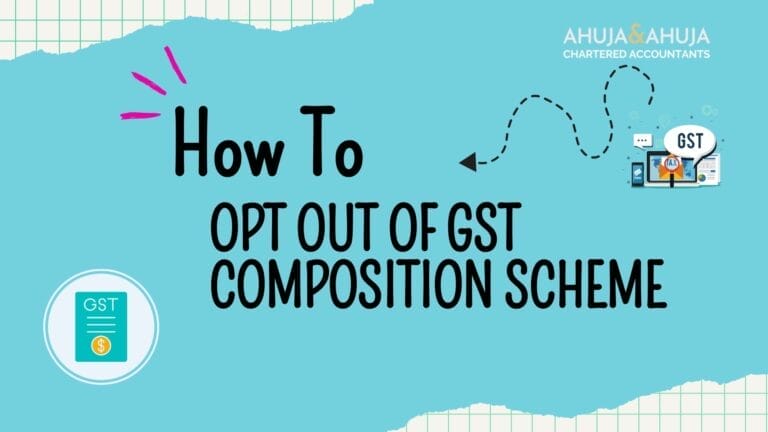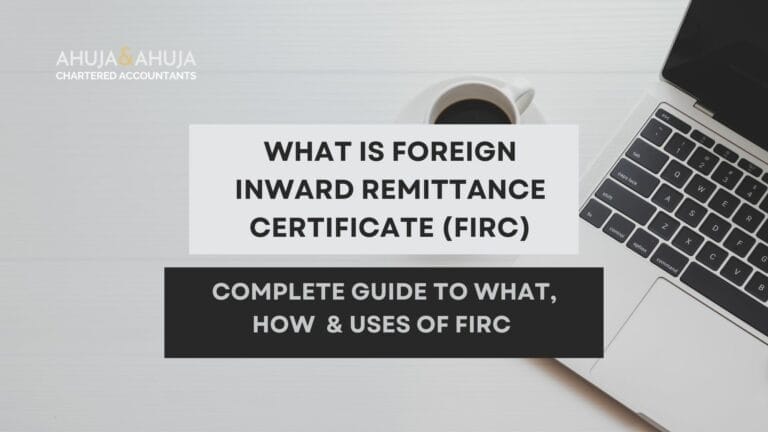GST E-Invoicing Limit Reduced to 5 Crores from 1st August, 2023
In the ever-changing landscape of financial regulations, one must always stay updated to ensure they are in compliance and can take advantage of new opportunities. Today, we focus on a recent and crucial change in India’s Goods and Services Tax (GST) regulations – the reduction in turnover limit for the issuance of e-invoicing.
The Government of India has been gradually refining and updating the GST framework since its inception, and e-invoicing stands as one of the key components of this framework. It plays a critical role in business transactions, helping ensure transparency and reduce errors.
Understanding E-Invoicing under GST
Before we delve into the new regulatory change, let’s establish a basic understanding of e-invoicing under GST. E-invoicing, or electronic invoicing, is a system where B2B (business-to-business) invoices are authenticated electronically by the GSTN (Goods and Service Tax Network). Once validated, an Identification Number (IRN) is issued against each invoice. This process brings uniformity and transparency, allowing easier tracking of invoices and making tax evasion more difficult.
With the Notification No. 10/2023, announced on May 10th, 2023, the e-invoicing system has taken another significant turn. This change, effective from August 1, 2023, directly impacts businesses with a turnover exceeding five crore rupees, who are now required to comply with the e-invoicing provisions under GST.
A Look into the Past: The Evolution of E-Invoicing Threshold
When the e-invoicing system was first introduced, it was mandatory only for businesses with an annual turnover exceeding INR 500 crores. Over time, the Government of India, in a bid to enhance tax compliance, has systematically reduced the threshold limit, extending the purview of e-invoicing to smaller businesses. The threshold was gradually lowered to INR 100 crores, then to INR 50 crores, INR 20 crores, and INR 10 crores.
Now, with the release of Notification No. 10/2023, the threshold has been further decreased to INR 5 crores. This phased manner of implementation allowed businesses to adapt gradually to the e-invoicing system and ensured a smoother transition.
E-Invoicing Limit Reduced: Notification No. 10/2023
Notification No. 10/2023-Central Tax, dated May 10, 2023, heralded a significant change in the Central Goods and Services Tax Rules. The threshold limit for mandatory e-invoicing under GST was reduced from ten crore rupees to five crore rupees. This change comes into effect on August 1, 2023.
According to this notification, a registered person with a turnover exceeding INR 5 Crore in any financial year from 2017-18 onward is required to comply with e-invoicing provisions. This essentially means that for each tax invoice, debit note, and credit note issued to a registered person, the issuer will need to generate an e-invoice. This requirement applies to both the supply of goods and the supply of services.
It’s important to note that this e-invoicing mandate applies to export transactions as well. And remember, this is in addition to the generation of e-way bills, which was already a requirement.
However, certain types of registered businesses are exempt from e-invoicing, as detailed by the CBIC (Central Board of Indirect Taxes and Customs) in Notification no. 13/2020 – Central tax (amended from time to time). The exempted entities include:
- Insurance Companies
- Banking Companies or Financial Institutions
- SEZ Units
- Government Departments and Local Authorities
- Goods Transport Agencies
Why This Reduction in E-Invoicing Limit?
The government’s move to lower the threshold limit is an attempt to widen the coverage area of its checks. With the lower limit, more businesses will fall under the e-invoicing mandate, reducing the scope for manipulation in invoices.
The phased approach of reducing the threshold limit over time has allowed for a gradual adjustment among businesses, preventing sudden disruptions. Starting from a threshold of Rs. 500 crores, the limit has now been brought down to Rs. 5 crores, enabling an increasing number of businesses to benefit from and adapt to this transparent, efficient invoicing system.
Here’s how I’ve included the relevant links in the section “How to Prepare for the Change”:
How to Prepare for the Change
In light of this new regulation, there are certain steps businesses can take to ensure a seamless transition towards the e-invoicing system. Below, we provide a broad overview of the steps that businesses need to take to comply with the new regulations:
- Understand the E-Invoicing System: The first step towards compliance is understanding the e-invoicing system in detail. Businesses should familiarize themselves with the process of generating an e-invoice, the data that needs to be included, and the format of the e-invoice.
- Assess Your Current Systems: Businesses will need to evaluate their current accounting and billing systems to check if they are capable of generating e-invoices in the required format. The software used for billing should be able to generate invoices in the prescribed e-invoice schema.
- Update Your Systems or Get New Software: If the current systems are not compatible, businesses might need to update their software or get new software that is compliant with e-invoicing requirements. Many accounting software providers are offering updates to include e-invoicing features.
- Get Registration on the E-Invoice Portal: To generate e-invoices, businesses need to register on the e-invoice portal of the GSTN. The portal is also known as the Invoice Registration Portal (IRP).
- Educate Your Staff: Make sure that the staff responsible for generating invoices are well-trained and understand the process of generating and verifying e-invoices. They should also be aware of the penalties for non-compliance.
- Implement a Process for Compliance: Implement a process to ensure compliance with the e-invoicing rules. This could include regular checks to make sure that e-invoices are being generated for all applicable transactions and that they are being correctly reported in GST returns. Our GST return filing services can assist businesses in ensuring compliance.
- Trial Run: Before the regulations come into effect, do a trial run to ensure that your systems and processes are working correctly. This will give you time to rectify any issues before the rules are enforced.
- Consult with Professionals: Given the technical nature of these requirements, it’s advisable to consult with professionals who can guide you through the process and help ensure that you’re compliant with the new regulations. At Ahuja & Ahuja, we offer comprehensive GST services including GST consultancy and GST refund services, and we can help guide you through this transition.
Remember, failure to comply with the e-invoicing rules could lead to penalties and loss of Input Tax Credit. So it’s crucial for businesses to start preparing as soon as possible to avoid last-minute hurdles.
For Any Query
Frequently Asked Questions (FAQs)
1. What is e-invoicing?
E-Invoicing or electronic invoicing is a system where B2B invoices are authenticated electronically by GSTN for further use on the common GST portal. An identification number (IRN) will be issued against every invoice by the Invoice Registration Portal (IRP) to confirm its authenticity.
2. Who is required to generate an e-invoice?
Effective from August 1, 2023, as per Notification No. 10/2023–Central Tax, any registered person under GST with an annual turnover exceeding INR 5 crore is required to generate an e-invoice for every tax invoice, debit note, and credit note issued to another registered person.
3. Are there exceptions to the e-invoicing mandate?
Yes, certain businesses are exempted from the requirement of e-invoicing. These include insurance companies, banking companies or financial institutions, SEZ units, government departments and local authorities, and goods transport agencies.
4. How does e-invoicing impact the Input Tax Credit (ITC)?
With the system of e-invoicing, businesses can claim Input Tax Credit (ITC) with finality since the authenticity of the invoices is vouched for by the Invoice Registration Portal (IRP). It reduces discrepancies, improves efficiency, and speeds up the ITC claiming process.
5. What happens if a business fails to comply with the e-invoicing requirement?
Non-compliance with the e-invoicing mandate may attract penalties under GST laws. It is therefore crucial for businesses to stay updated with these changes and ensure they are compliant.
Conclusion: Limit for E-Invoicing Reduced to 5 CR
The reduction in the e-invoicing threshold limit under GST from INR 10 crores to INR 5 crores is a significant change that will impact a larger number of businesses. While it may require some adjustments, the move will enhance transparency, improve compliance, and reduce the scope of invoice-related frauds. As we move towards a more digital economy, such changes are important steps towards streamlining business operations and making tax compliance easier and more efficient.
Our Locations
Disclaimer
The materials provided herein are solely for educational and informational purposes. No attorney/professional-client relationship is created when you access or use the site or the materials. The information presented on this site does not constitute legal or professional advice and should not be relied upon for such purposes or used as a substitute for professional or legal advice.







